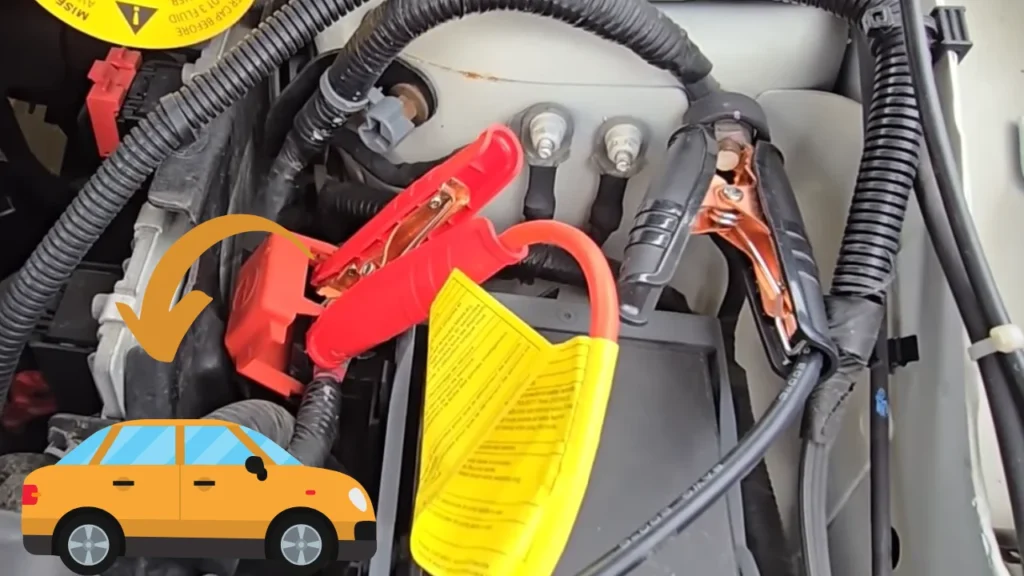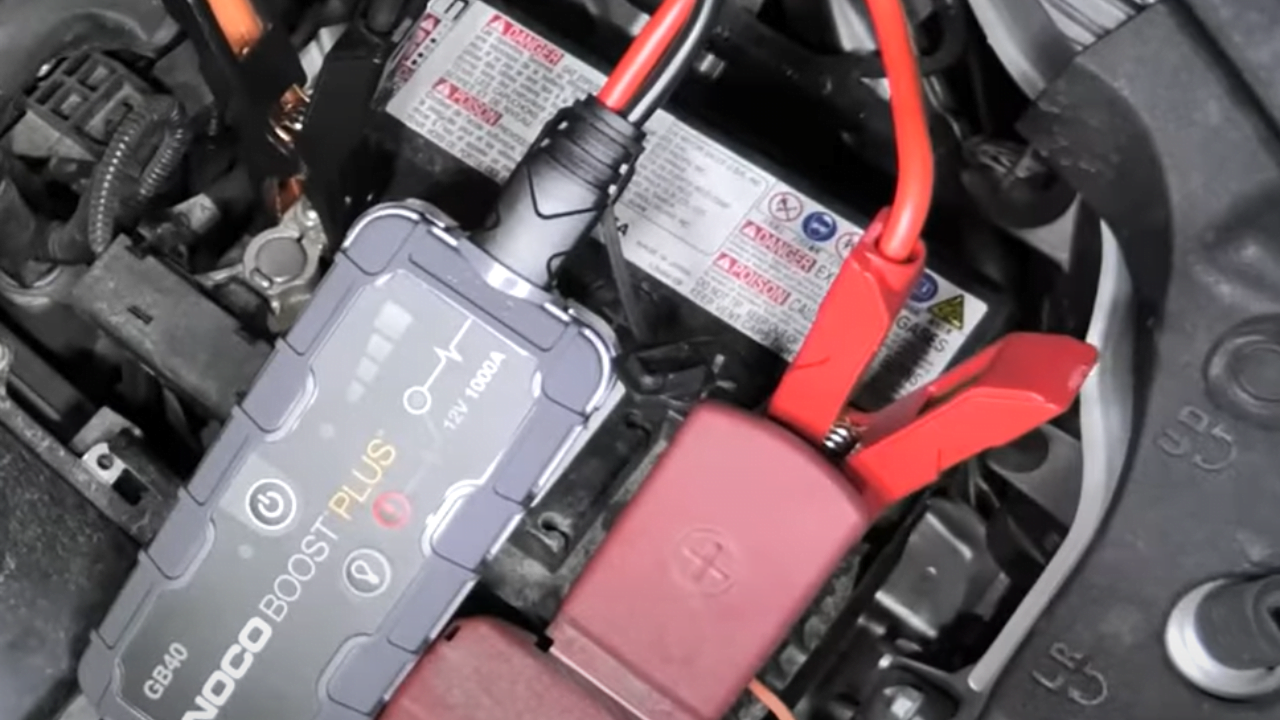Imagine this: It’s a brisk winter morning, and you’re all set for a day out. You turn the key, and—nothing. Your car battery is dead. It’s a scenario that’s all too familiar in colder weather, but here’s a twist: what if you have a hybrid vehicle and need to jump-start a traditional car? Can a hybrid jump start a normal car?
During a snowstorm or a freezing morning, the last thing you want is to be left stranded, wondering if your hybrid can help get that traditional car up and running. It’s a pressing question that’s not just about convenience—it’s about being prepared.
Car Battery Issues in Winter
We all know that winter brings its own set of challenges for our vehicles. But have you ever considered how cold weather affects your car battery? It’s not just about a dead battery—it’s about understanding why it happens and how to prevent it.
Cold Weather Impact on Your Battery
When temperatures plunge, your car battery can struggle more than usual. Here’s why:
- Reduced Battery Power: Cold weather slows down the chemical reactions inside the battery. This means your battery can’t deliver as much power as it would in warmer conditions. If your battery is already on the weaker side, it might not have enough energy to start your engine.
- Thicker Engine Oil: The oil in your engine thickens when it gets cold. Although oil doesn’t freeze, it becomes more viscous. This thicker oil creates extra resistance, making the engine harder to turn. As a result, your battery has to work harder to get the engine started.
These factors combine to put a severe strain on your battery. If your battery is already old or not in the best shape, winter can make these issues worse.
Hybrid Vehicles and Battery Strain
Now, let’s talk about hybrid vehicles. You might think that hybrids, with their advanced technology, are immune to winter battery problems. Unfortunately, that’s not the case:
- Battery Performance: Hybrid batteries can also lose their efficiency in the cold. Just like traditional batteries, their performance drops as temperatures fall. They may also not hold a charge and struggle to provide enough power.
- Dual Battery Systems: Hybrids have complex electrical systems, often including high-voltage and standard 12-volt batteries. Both systems are affected by cold weather, though in different ways. The high-voltage battery manages the hybrid system, while the 12-volt battery powers the traditional electrical components like lights and accessories.
Jump-Starting Procedures

Jump-starting a vehicle might seem straightforward, but following the proper steps is essential when dealing with hybrids and traditional cars. Here’s everything you need to know to tackle both scenarios effectively.
Jump-Starting a Hybrid Car
So, your hybrid car is dead, and you need to get it back on the road. Here’s a step-by-step guide to make sure you do it right:
Steps to Jump-Start a Hybrid Vehicle:
- Apply the parking brake to keep both vehicles securely in place.
- Turn off the hybrid system by removing the key or ensuring the system is fully off.
- Open the hood on both vehicles to access the battery areas.
- Locate the jump-starting terminal in the hybrid, usually found under the fuse block cover.
- Connect the jumper cables: Red to the positive terminal and black to a metal surface on the vehicle with the dead battery.
- Run the boosting vehicle for about 5 minutes at 2,000 RPM.
Start the hybrid and carefully disconnect the jumper cables in reverse order.
Jump-Starting a Traditional Car Using a Hybrid
If you need to jump-start a traditional vehicle using your hybrid, follow these steps:
- Position the vehicles: Park your hybrid close to the traditional car but ensure they do not touch.
- Turn off both vehicles: Make sure both vehicles are completely turned off before connecting the cables.
- Connect the positive cable (red): Attach one end to the positive terminal of the dead car’s battery and the other end to the positive terminal of your hybrid’s battery.
- Connect the negative cable (black): Attach one end to the negative terminal of your hybrid’s battery and the other end to an unpainted metal surface on the traditional car’s engine.
- Start the hybrid engine: Let it run for a few minutes to charge the dead battery.
- Start the traditional car: Try starting the car. If it starts, allow both vehicles to run for a few more minutes to ensure proper battery charging.
- Disconnect the cables: Remove the cables in reverse order of connection.
Jump-Starting a Hybrid Vehicle Using a Traditional Car

When you need to jump-start a hybrid with a traditional car, follow these steps:
Setup:
- Position Both Cars: Park the traditional car close to the hybrid without allowing them to touch.
- Ensure Both Cars Are Off: Turn off both vehicles before connecting the cables.
Steps to Jump-Start the Hybrid:
- Connect Positive Cable (Red): Attach one end to the positive terminal of the hybrid’s battery and the other end to the positive terminal of the traditional car’s battery.
- Connect Negative Cable (Black): Attach one end to the negative terminal of the traditional car’s battery. Connect the other end to an unpainted metal surface on the hybrid.
- Start the Traditional Car: Allow it to run for a few minutes to provide charge to the hybrid battery.
- Start the Hybrid: Attempt to start the hybrid. Ensure the “ready” light comes on.
- Remove the Cables: Disconnect the cables in reverse order.
Potential Risks and Considerations:
Jump-starting a vehicle may seem straightforward, but there are hidden risks and considerations that you need to be aware of. Whether you’re using a hybrid to jump-start a traditional car or vice versa, understanding these potential issues can help you avoid mishaps and ensure a smoother process. Let’s delve deeper into the risks and key considerations.
Risks When Jump-Starting a Hybrid Vehicle
- Electrical System Strain: Hybrids are equipped with complex electrical systems that can be sensitive. Frequently using your hybrid to jump-start other vehicles can put undue stress on its electrical components.
- Battery Compatibility: When jump-starting another vehicle, make sure the battery you’re using matches the required power and voltage. Mismatched batteries can cause problems.
Risks When Jump-Starting a Traditional Vehicle
- Potential for Damage: Incorrectly connecting jumper cables can lead to sparks, which might damage electrical systems or even cause battery explosions in severe cases.
- Temporary Fix: A jump-start might only offer a temporary solution. If you frequently need to jump-start your vehicle, it could be a sign that the battery is on its last legs or that there is a more significant underlying issue.
Key Considerations for Both Vehicle Types
Connection Points:
Refer to the manual for correct jump-start terminals in hybrids. Incorrect connections can cause damage. Use proper points in traditional vehicles too.
Battery Condition:
Check for corrosion or damage before jump-starting. If a battery is too worn, consider replacing it instead.
Safety First:
Park vehicles securely without contact and keep bystanders away. Seek help if unsure about the process.
Temperature Considerations:
Cold weather can reduce battery effectiveness. Ensure jump-starting in safe conditions.
Troubleshooting and Final Tips
So, you’ve gone through the jump-starting process, but what if things don’t go as planned? Here’s a quick guide to troubleshooting common issues and some final tips to ensure everything runs smoothly.
- Vehicle Won’t Start: Check cable connections and ensure you’re using the correct terminals. Look for signs of battery or cable damage, such as cracks or corrosion.
- No Power to Accessories: If the car starts but accessories don’t work, there may be an issue with the battery or alternator. Check connections or get the battery tested.
Unusual Sounds or Smells: Strange noises or burning smells may signal mechanical or electrical issues. In such cases, it’s best to consult a professional.
Safety Guide for Jump-Starting Your Vehicle
Requirements to Jump-start a car are careful attention to safety to prevent damage and ensure a smooth process. Here’s a detailed guide to help you navigate the procedure safely:
- Ensure Both Vehicles Are Off: Power down both cars completely to prevent electrical surges and reduce the risk of sparks or damage.
- Park Vehicles Properly: Position vehicles close but not touching, ensuring safe access to both batteries.
- Connect Jumper Cables Correctly: Attach the positive (red) cable first, then the negative (black) cable to a solid, unpainted surface on the dead vehicle.
- Avoid Sparks and Flammable Materials: Keep flammable items away from the battery area to prevent potential fire hazards.
- Keep Bystanders at a Safe Distance: Ensure no one stands close during the jump-start to avoid injury from sparks or fumes.
- Monitor for Unusual Sounds or Smells: Stop immediately if you hear strange noises or smell burning, and seek professional help.
- Regular Battery Maintenance: Regularly check your battery for corrosion or damage to prevent unexpected failure.
Final Words:
The answer to “can a hybrid jump start a normal car?” is yes but jump-starting a car doesn’t have to be a hassle if you know what you’re doing. I’ve found that understanding the specific steps for both hybrid and traditional vehicles makes a big difference. I can confidently handle battery issues by following the correct procedures and taking necessary safety precautions.
